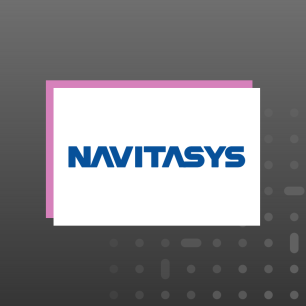In a World Turned Upside Down, View Things Through the Eyes of Your People
The largest and fastest transformation in our lifetime lies ahead and we have great opportunity to shape positive change for generations to come.
Share
Change has been happening right in front of us for many years. Fueled by progress in technology and digital capabilities, we have been talking about the need to change and edging towards an experience-based culture. We have experimented with remote work, flexible hours, and introduced concepts of agile teams and working. Communication has moved from email and phone to messaging platforms, images, videos, slack. Those ahead of the curve knowing which method to use and when.
It felt like we had been making reasonable progress. Doing what’s possible within an already jam-packed day. Dabbling with new technologies, embracing some organizational change and trying (at times) to be more socially responsible. To build a broader purpose and mission for our employees.
And then suddenly – COVID-19 turns us upside down
Covid-19 hits and we begin to question everything. A new perspective of finding ways to sustain working and earning, of managing home and childcare, of keeping family and friends safe and well. To survive, let alone thrive. I’m not sure any of us ever envisioned a time when this would be a core requirement for survival, and at such rapid pace.
Perhaps this is the catalyst we have been waiting for? A compelling need to change and to progress. We have certainly experienced change across the last decade, but have we really moved the needle on building more inclusive, balanced, and productive workplaces?
Before the pandemic, research suggested we wouldn’t close the gender pay gap for another 200 years, well-being and mental health issues have never been higher and productivity across the globe has been flat-lining.
A compelling need to transform
We’ve been experiencing the 4th Industrial Revolution but, let’s be honest, it has felt more like a meander towards some slightly new ways of living and working, than a revolution. Suddenly, life has turned on its head and we must embark on rapid change.
For businesses, there is no choice but to go digital. Satya Nadella, CEO at Microsoft recently said the company has seen “2 years’ worth of digital transformation in 2 months”. And for many industries, the way business is done will never be the same again. Virtual Reality changes the way we shop (some online opticians already enable customers to virtually try on glasses), to finalize already heavily researched purchase decisions. Healthcare and education are following similar trends – digital consultations and online classrooms – to some extent, are likely to stick around.
Another shift started through the automation of work is the growth of service roles. Technology has automated processes lifting the focus to the experience, interpretation, and advice needed around the encounter. This means job roles increasingly depend on the behaviors people show — their ability to connect and collaborate, to show empathy, to interpret and apply meaning, to solve complex problems, to think creatively, and learn new skills.
And, unlike technical skills or qualifications, which can take months or even years to master, people can hone and develop new behaviors. For individuals, this means that new jobs, new careers, new teams are accessible.
Businesses now find they have access to a pool of employees with transferrable capabilities and the potential to take on new challenges. Somewhat fortuitous when they face constant disruption, and therefore organizations are able to evolve their structure, to pin-point critical new roles and construct agile squads, will remain compelling and relevant in a volatile marketplace. It’s been said many times before – people are an organization’s most powerful asset.
Businesses now find they have access to a pool of employees with transferrable capabilities and the potential to take on new challenges.
The opportunity is human
The great news is, as humans, we are well-equipped to deal with this. We are adept at developing and changing, and while it can be daunting and difficult when change is linked to broader meaning and purpose, we find motivation. As individuals, we have differing styles, varying strengths, and development needs. If organizations can understand an individual’s capability and potential, they have the foundations for initiating and sustaining behavioral change.
For over a century, psychological research has shown the relationship between cognitive ability, personality, motivational preferences, behavioral style, and outcomes such as job performance, engagement, and customer service. Objectively understanding people and aligning this with organizational need pays off — Literally.
Individuals are often embarking on multi-chaptered careers, perhaps with periods working independently or taking sabbaticals. Being resilient, open to learning, developing, growing, and embracing new opportunities (1 in 3 people feel their roles won’t exist in the next 5 years) will be critical to enabling constant reinvention. As we live and work longer, we need to find ways to balance and sustain our lives across a longer period.
It’s abundantly clear that the next generation will experience a very different world and we are shaping this now.
Shaping the future
Leaders, managers, and HR teams have such a key role to play. Now, the need to transform can’t be debated. It can’t be de-prioritized, or budget removed. To transform is simply to survive.
The first task is to clearly articulate that transformation needs to start with people. Yes, there will be new technology and platforms to learn, but working digitally demands an interpretation of outputs, understanding meaning, and impact, fast learning of new technology, sharing of information to influence decisions. All deeply human traits.
At SHL we have partnered with many organizations across the globe to drive transformation. We audit capability and future potential across key populations, i.e. Sales Managers, Retail Managers, Leaders, and in businesses with varying transformation goals – to become more customer-focused, increase creativity, build a ‘start-up’ mentality, and develop a growth culture.
In every scenario, we have helped the organization to pivot, re-align, and strengthen their capabilities to deliver business results. The secret? Objectively understanding people to enable alignment of capability and potential with organizational needs.
And in terms of HR transformation, perhaps this will carve the way for broader adoption of people analytics, data-led people decisions, balanced with the critical focus on building a genuine understanding of individuals and nurturing human connections.
In a world turned upside down, organizations driving transformation through an in-depth and personalized understanding of their people will thrive.
Contact us to learn more about how we can transform your business by helping your people grow to their fullest potential.









